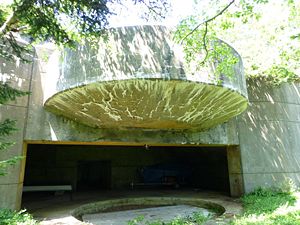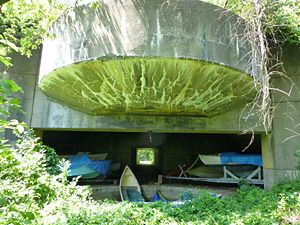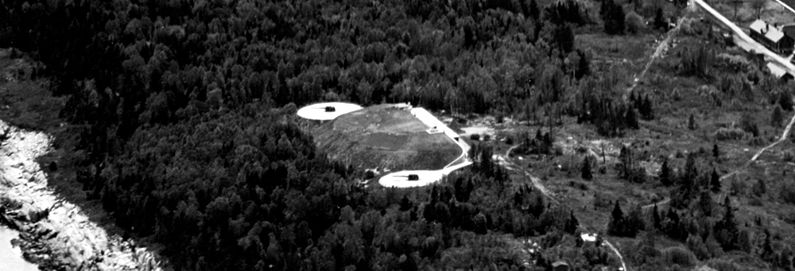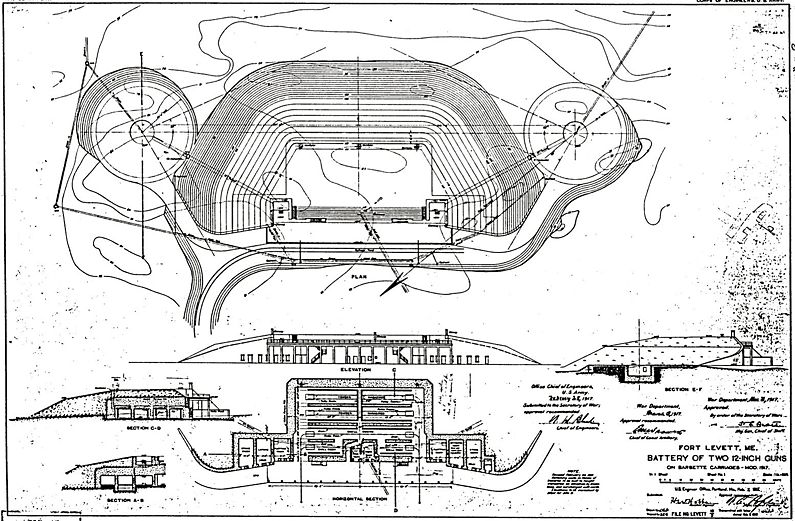Battery Foote
|
Battery Foote (1921-1948) - Battery Foote was a reinforced concrete, World War I 12 inch coastal gun battery on Fort Levett, Cushing's Island, Cumberland County, Maine. The battery was named in G.O. 129, 1 Dec 1919, after Colonel Stephen M. Foote (Cullum 3030), Coast Artillery Corps, who died 30 Oct 1919. Battery construction started circa 1918, was reported complete 17 Dec 1920 and transferred to the Coast Artillery for use 26 Jan 1921 at a cost of $ 236,700.00. Deactivated in 1948. World War I (1917-1918)Part of the Harbor Defense of Portland, Maine. Originally built as a World War I concrete coastal gun battery with two 12" M1895MI-A4 guns mounted on M1917-A2 Barbette carriages. This was a single story battery with the guns located on open concrete gun pads on the same level as the common magazine and support structure between them. The common magazine and support structure was an earth covered reinforced concrete building that contained shell rooms, powder rooms, a power plant, plotting rooms and personnel facilities. Shells were moved from the magazine to the gun loading platform by shot carts. No shell or powder hoists were provided or needed. The two guns were mounted on circular concrete pads with sunken gun pits. The guns and gun crews were completely in the open with no protection from incoming fire or from aircraft. The M1917 carriage and the sunken gun pit allowed a gun elevation of 35 degrees, giving the gun a range of over 16 miles.
World War II (1941-1945)Battery Foote was a part of the Harbor Defenses of Portland plan throughout World War II. The harbor defense modernization program called for casemating Battery Foote to protect it from incoming fire and aircraft attack. Most of the original common magazine and control structure was retained and the long roadway behind that structure was turned into a long concrete corridor leading to the two new casemates. The new area in back of new corridor added power and air conditioning equipment rooms along with a new central entrance. The new concrete casemates were constructed over the old open air pads at each end of the new corridor so as to completely enclose the route from the magazines to the guns. All of this, with the exception of the exposed part of the casemate, was covered with earth. The casemating was completed in 1944. In 1948 the battery was declared surplus and scrapped. Current StatusNo period guns or mounts in place.
Sources:
Links: Visited: 29 Jun 2012
| ||||||||||||||||||||||||||||||||||||||||||||||













